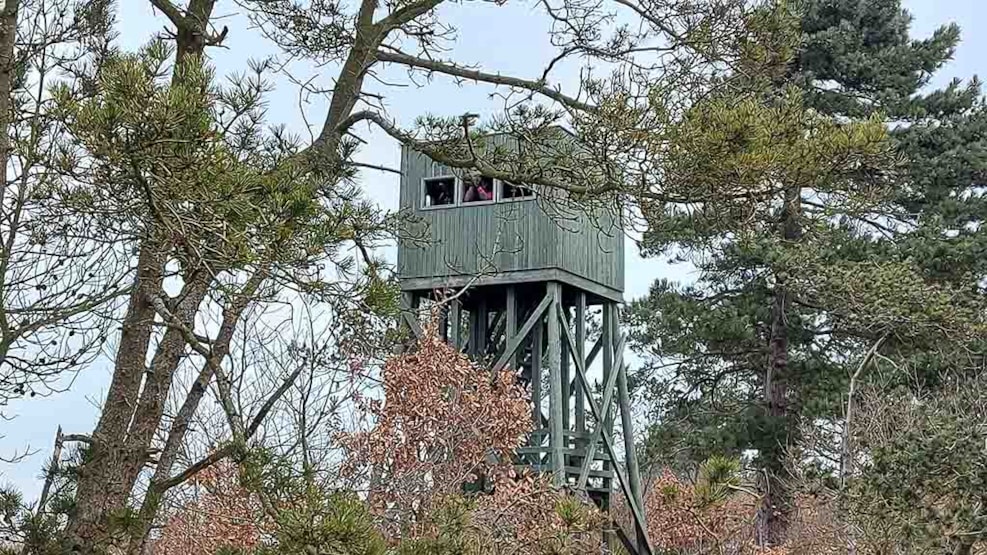
Agernæs and Flyvesandet
Agernæs and Flyvesandet are perfect for a hike. See the nature of Funen that you don't get to experience anywhere else, enjoy the magnificent view from the bird tower and see if you can spot the rare birds!
Agernæs is a peninsula and the northernmost point on North Funen. Flyvesandet is Funen's northernmost coast, and the dunes here are some of only ones to be found on Funen.
Here lies the Storskoven woods on the coast with beautiful old beech trees. Here you can relax and enjoy the view. Porpoises or seals sometimes pass by. On clear days, you can see all the way to the Samsø island.
Here are good opportunities to find belemnites and other fossils.
Flyvesandet is also one of the few places in Denmark where you can find the rare small pasque flower.
If you walk quietly down the paths, you can get quite close to the wild animals. You can also stop regularly and look out over the fields. Here are often birds of prey, deer and hares to spot. You can be lucky to see the great sea eagle and the marsh owl.
The bird watching tower
From the Bird Tower in the western part of Flyvesandet, there's a great view of the entire Agernæs Flak, Æbelø and Nærå beach. Large parts of the Flak are dry at low tide and form one of Funen's largest wetlands. The area is a designated bird protection area and in 1998 was classified as a wildlife sanctuary with regulation of traffic and hunting to protect the birds.
Agernæs and the reclamation
Agernæs is now a peninsula, but was once almost an island in itself. There was a flat beach north of Krogsbølle, and Nærå Strand was part of a giant fjord that stretched all the way to Bårdesø and Tørresø. Count J. G. Moltke gained ownership of the Kørup and Egebjerggård estates from 1781. He made sure that much of the fjord was drained. The land reclamation made the area larger and land-solid with the rest of Funen. There are still channels in the area and an electric pump ensures that the water is constantly discharged into the sea.